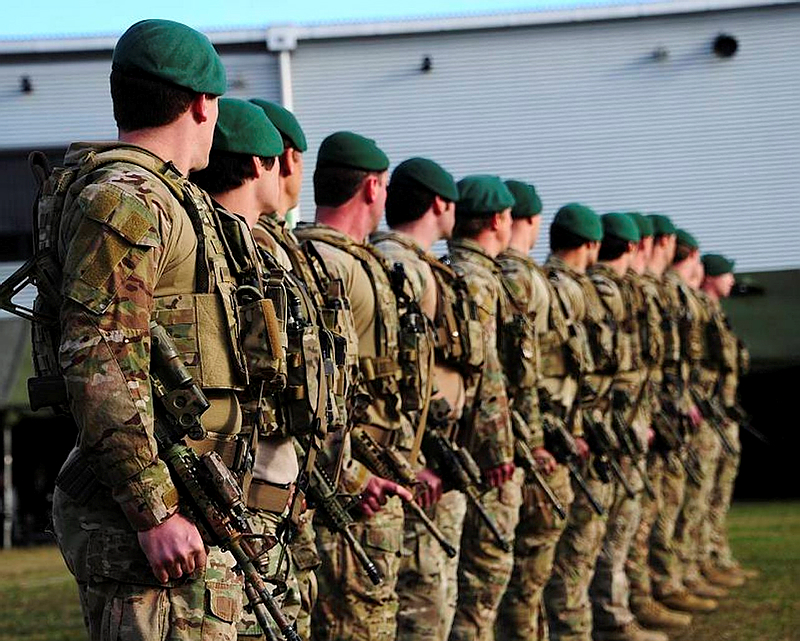
The tragic death of Corporal Cameron Baird—killed in action in the Khod Valley in southern Afghanistan—and the wounding of two other ADF personnel, reminds an Australia reluctant to pay attention that the war in Afghanistan isn’t over yet. According to Defence Minister Stephen Smith, around 1,000 troops will be withdrawn by the end of the year. Based on the Minister’s statement to Parliament on 19 June, it looks as though at least 650 personnel will remain in country during 2014. After that, the Minister assesses there will be around 125 ADF trainers divided between Kabul and Kandahar and an undetermined number of staff embedded with the International security Assistance Force (ISAF)—there are currently over 100—as well as a possible continuing Special Forces role.
In short, even though everyone’s eyeing the exit signs, the reality is that Australia is committed for another eighteen months to an operation that will be every bit as large as, say, our Iraq deployment. Beyond 2014, we’ll also be there in appreciable numbers for the long haul. Our involvement will be every bit as long as Prime Minister Gillard speculated back in 2010: ‘for the next decade at least.’ In all likelihood, casualties will continue.
It’s unfashionable to claim that there’s anything positive to say about the situation in Afghanistan, but this month two important gains have been made that are worth noting. They’ve been achieved at high cost, and could well be reversed, but some credit is due both to the Afghan government and ISAF. The first positive was the transfer of command from ISAF to Afghan National Security Forces (ANSF) on 18 June. This was in keeping with ISAF plans agreed in Chicago in 2010. Afghan forces are now commanding all operations and are leading on the ground, Stephen Smith says, on 95% of them. The Afghans will remain dependent on ISAF support for all manner of combat enablers such as close air support, intelligence and medical assistance, but this is still a significant advance. Smith also told Parliament that the ANSF was providing 90% of its own basic training, progress again.
The sustainability of the ANSF remains a critical factor to Afghanistan’s long-term prospects. It will take major funding from the international community and a significant presence of military advisers, but one can cautiously say Afghanistan is on the right track. It will be objected that ANSF training and techniques will fall short of the West Point play-book, but no matter: Afghans will manage in their own way. That could well be uncomfortable to the ANSF’s backers because, sooner or later, there’ll be incidents of combatant or civilian mistreatment that will be disapproved of in more developed societies. But as long as Kabul’s central government cracks down on such incidents as they arise, the ANSF will have a credible remit.
A second significant step forward was the announcement on 18 June that the Afghan Government and the US were prepared to open negotiations with the Taliban. A background briefing by senior US Administration officials is worth reading to get a sense of the challenges presented by such a momentous step. According to the officials, the Taliban has now publically committed to say ‘first, that they oppose the use of Afghan soil to threaten other countries; and second, that they support an Afghan peace process’. On this basis, an office in Qatar will be opened for the purposes of negotiating with the Afghan government.
Readers shouldn’t doubt that the US has been intensely involved in bringing this outcome to the table. There’s a lot that might yet go wrong with such talks, not least that the Taliban will continue fighting and, as a result, ISAF will continue to target Taliban commanders in the field, right up to Mullah Omar if the opportunity arises. The Taliban wouldn’t be contemplating a political settlement if they were not seriously worried about their ability to keep finding people willing to take the risk of being targeted once in leadership positions. We can thank the drone strikes, as well as the work of Australia’s Special Forces, for bringing us to this point.
Few tasks will be as odious for many Afghans and ISAF representatives as to negotiate with the Taliban, but what’s the alternative? They can’t be eliminated on the battlefield, although their military impact can be greatly diminished. The only lasting solution will be to find an outcome which brings the Taliban into a political process. This is hardly a new path and, in fact, is one with well-trodden antecedents in Northern Ireland, South Africa and many other countries. Talking to the Taliban shows that ISAF is winning, not losing: it’s the best sign yet that Afghanistan might be able to look to a stable future. That we’re in this position at all is due to people like Corporal Baird, a veteran of five combat tours and, according to General David Hurley, a man who was ‘never happier than when the situation demanded decisive action and courage’. We’ll need more of that spirit in coming years.
Peter Jennings is executive director of the Australian Strategic Policy Institute. Image courtesy of Department of Defence.

